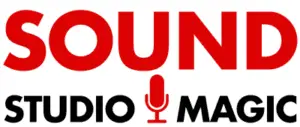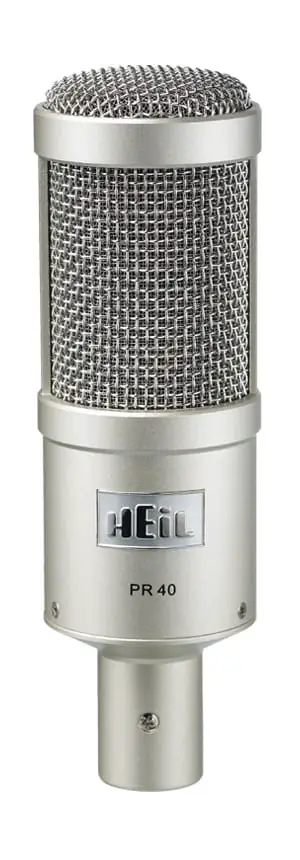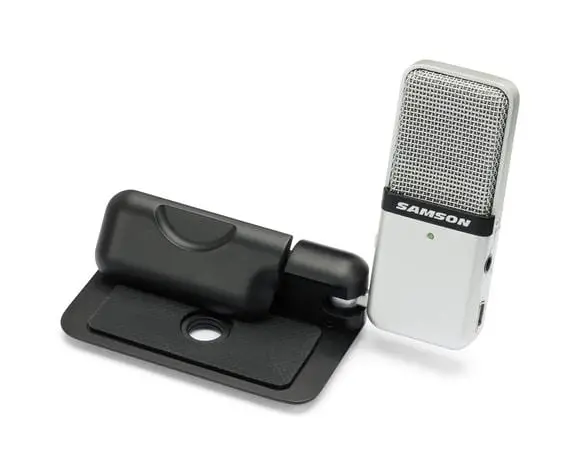Zoom is becoming increasingly popular these days not only for friends to communicate with one another over high-quality video chat – especially now that staying indoors is more crucial than ever with COVID19 running rampant worldwide. But also for professional meetings and business purposes.
While webcam audio quality is, of course, important, the whole point of Zoom is to communicate – meaning having a reliable microphone is crucial for the best audio quality calls. If you came to this article today asking yourself the question, “what kind of microphone do I need for Zoom”? You came to the right place.
For Zoom calls, you will need a USB microphone that has a cardioid polar pattern, and a large-diaphragm condenser, particularly with a smooth, flat frequency response between 18hz–20khz to capture the detail of human voice.
Table of Contents
Large-diaphragm Condenser Microphones
The best microphone for Zoom meetings and video conferencing is a large-diaphragm condenser mic.
Why should you use a large diaphragm USB condenser microphone for Zoom calls?
A large-diaphragm USB condenser microphone (like a Blue Yeti microphone) have a flat frequency response with low background noise, which sounds very much like a broadcast. They sound rich on the low end, and then they have a crisp high end as well, which makes a USB condenser microphone perfect for video conferencing and Zoom calls. Some even have their own headphone jack, which can be convenient.
When you’re recording voice, as on Zoom calls, most people are looking for a pleasant sound. In particular, the goal is a lush sound with a lot of low-frequency response for human voices.
Large-diaphragm condenser mics also generate less self-noise than small-diaphragm condenser mics.
Bottom line: when it comes to capturing voice, the large-diaphragm condenser mic is the way to go. A USB mic, in particular, may provide more convenience.
To meet all the requirements and capture audio for online video conferencing meetings, I found a few good studio microphone options to consider as your Zoom microphone. Some even have a headphone jack and include a USB cable, which is typical for USB mics.
Best Microphone Choices for Zoom Calls
Samson Meteor Mic – the best microphone for Zoom Meetings (USB Microphones)
If you are looking for professional-level voice audio quality, you can’t go wrong with the Samson Meteor Mic. The Samson Meteor USB microphone is convenient and portable for when you go on those business trips and have limited space in your luggage, comes with a USB cable, and has a 3-legged stand so you can easily set it up anywhere. In addition to convenience, the Samson Meteor USB microphone has top-notch audio quality focused on capturing noise from the front – limiting ambient noise to a point it’s unnoticeable. With a frequency response between 20 Hz – 20 kHz, you can rest assured your voice will be heard crystal clear, which makes this versatile microphone an excellent choice for video conferencing and Zoom calls.
On top of sounding professional, you can feel professional, too. The Samson Meteor Mic comes in 3 stylish colors: titanium black, titanium red, and chrome, and also has its own headphone jack. This USB mic has fantastic audio quality and a beautiful appearance for your home studio or by your side (when you are on the go) for an affordable price in stores or online on Amazon or eBay. You’ll need an available USB port on your laptop or desktop computer, but I’m willing to bet you have an open port for this USB mic.
HEiL Sound PR-40 Sound Quality (XLR Microphones)
Another professional-level studio microphone that could be a perfect fit if you want to sound smooth and clear to your colleagues at your next big business meeting or conference is the Heil Sound PR-40. This excellent condenser microphone — while a little higher on the price scale, with a frequency range of 28 Hz – 18 kHz, guarantees every detail of your voice is heard loud and clear by everyone in the call and is one of the best microphones for the price.
A steel body protects this condenser microphone, and it gets added style points with a zinc die-cast ring on the bottom. This premium mic is worth the money, especially if you intend to use it for both Zoom calls and other webinars or podcast recordings.
NOTE: This mic requires an XLR cable. To get the sound into your computer through the USB port, you’ll need an audio interface, like the Focusrite Scarlett Solo, in between the mic and your laptop.
Samson Go USB Microphone for Audio Quality (USB alternative)
Let’s say you are looking for high-level sound quality Zoom microphone but aren’t necessarily on a high-quality budget. Then, you should be looking at USB microphones. Look no further – the Samson Go USB microphone has got you covered. This USB condenser mic is not only affordable but studio-grade with minimal background noise. It has dual-pickup patterns that you can select to optimize your call sound quality – omnidirectional and cardioid, ideal for smoothly transmitting your voice or recording. On top of this, the Samson Go Mic is easily portable, so you can take it with you anywhere you go, and has its own headphone jack, which makes this another great choice for video conferencing and Zoom calls.
In Conclusion
If you don’t want to buy a USB microphone for video conferencing and Zoom calls, you could always go out and buy a laptop with HD sound built into the microphone, or opt to use a pair of headphones you purchased for a few bucks at the local store. But if you want the best quality for your Zoom calls, it will be worth investing in a superior USB condenser microphone for superior sound quality.
F.A.Q.
- What kind of microphone do I need for Zoom calls? You will need a USB microphone with a cardioid pattern, a large-diaphragm condenser, and a frequency response of 18hz–20khz to capture voice with minimal background noise, simply referred to as a USB condenser microphone.
- Can I use a microphone with an XLR jack? Yes, you can use an XLR mic for Zoom calls. However, you may need and Audio Interface to convert the XLR to USB microphone for your computer since XLR mics don’t have a USB cable.
- Must my USB microphone have a large-diaphragm condenser for Zoom? Not necessarily. If you are recording musical instruments, or ambient sounds, then other mics may suffice. But when your purpose is to capture clean voice, as is usually the case with Zoom, then the large-diaphragm condensor mic is the right choice.
- What is the price range for a good zoom mic? You can get decent USB microphones for voice in the range of anywhere between $50 up to $2,000. But, don’t overspend. Check prices on Amazon first.
- What about a microphone for a female voice? Here is a handy article on the best microphones for female voice-over work.
- Review of the ALABS IRON MINI-WL: A Powerhouse Wireless Microphone - October 4, 2023
- What is a Saturator in Music Production: A Brief Explanation - May 11, 2023
- What Are Rotary DJ Mixers? An Overview - May 11, 2023
SoundStudiomagic.com is a participant in the Amazon Services LLC Associates Program, an affiliate advertising program designed to provide a means for sites to earn advertising fees by advertising and linking to Amazon.com. We also participate in other affiliate programs which compensate us for referring traffic.




